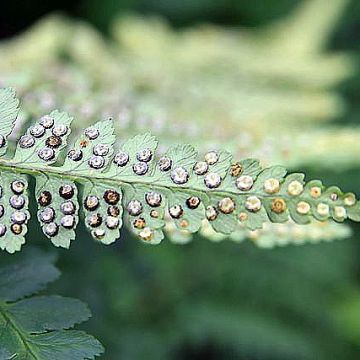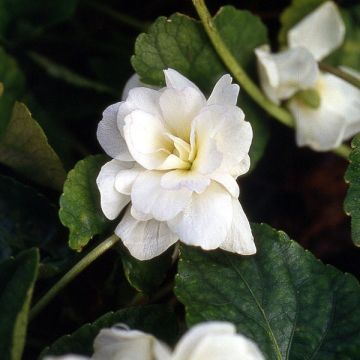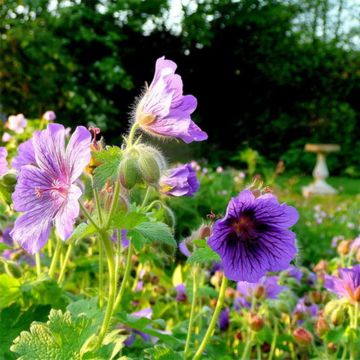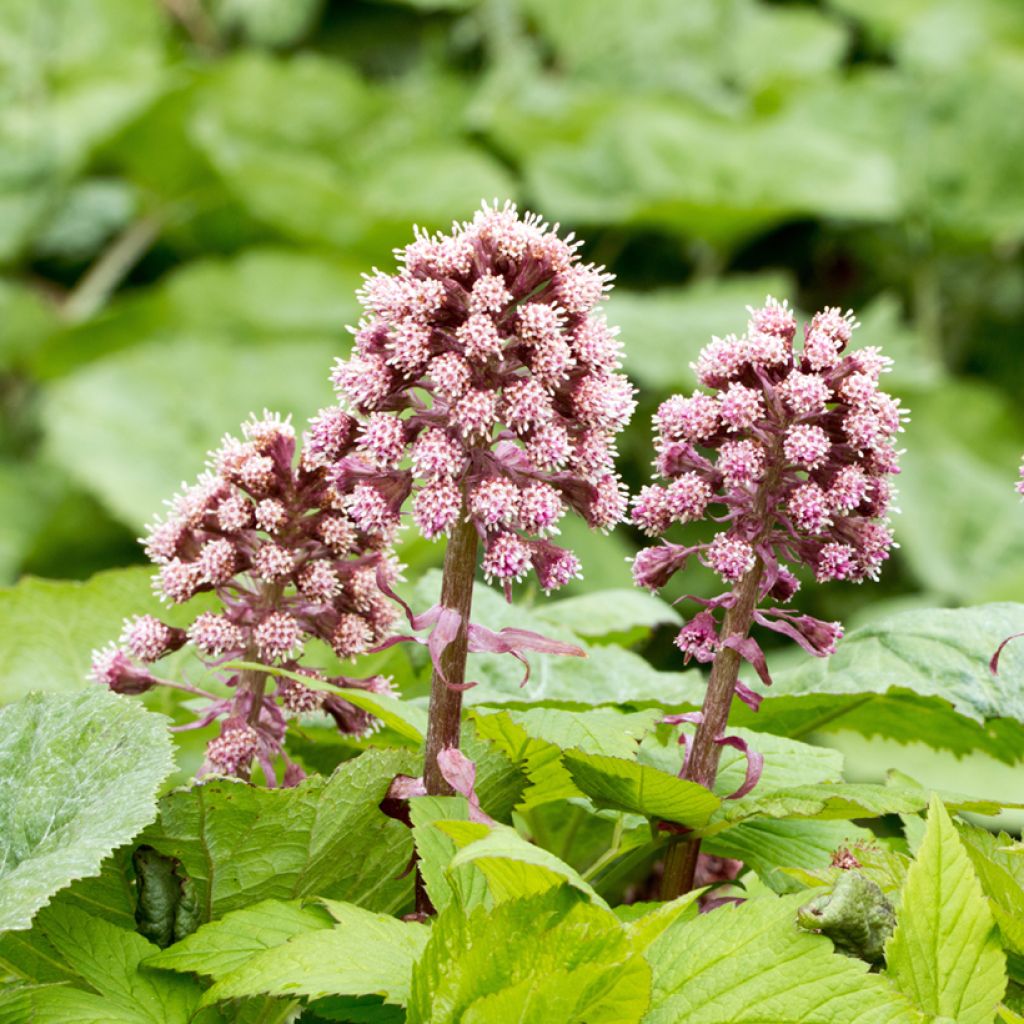

Petasites hybridus


Petasites hybridus


Petasites hybridus
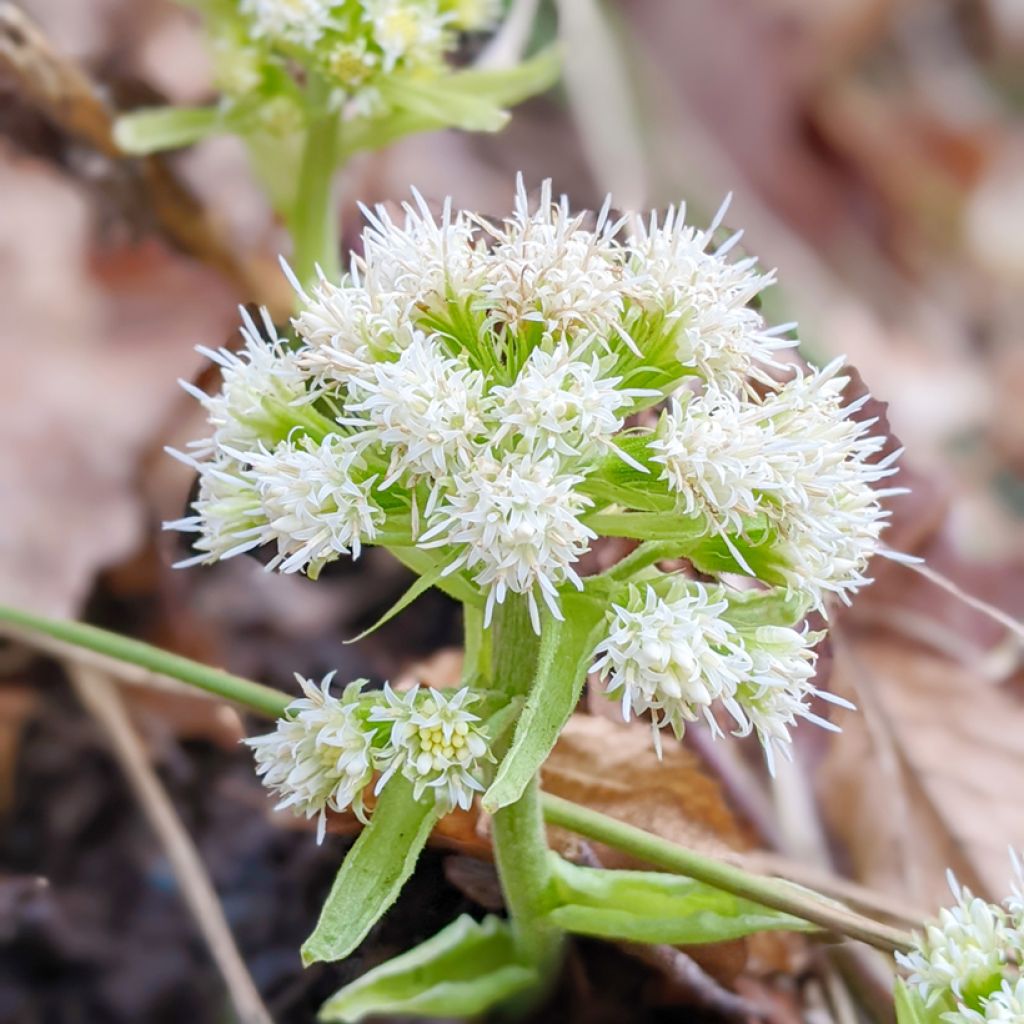

Petasites hybridus


Petasites hybridus


Petasites hybridus


Petasites hybridus
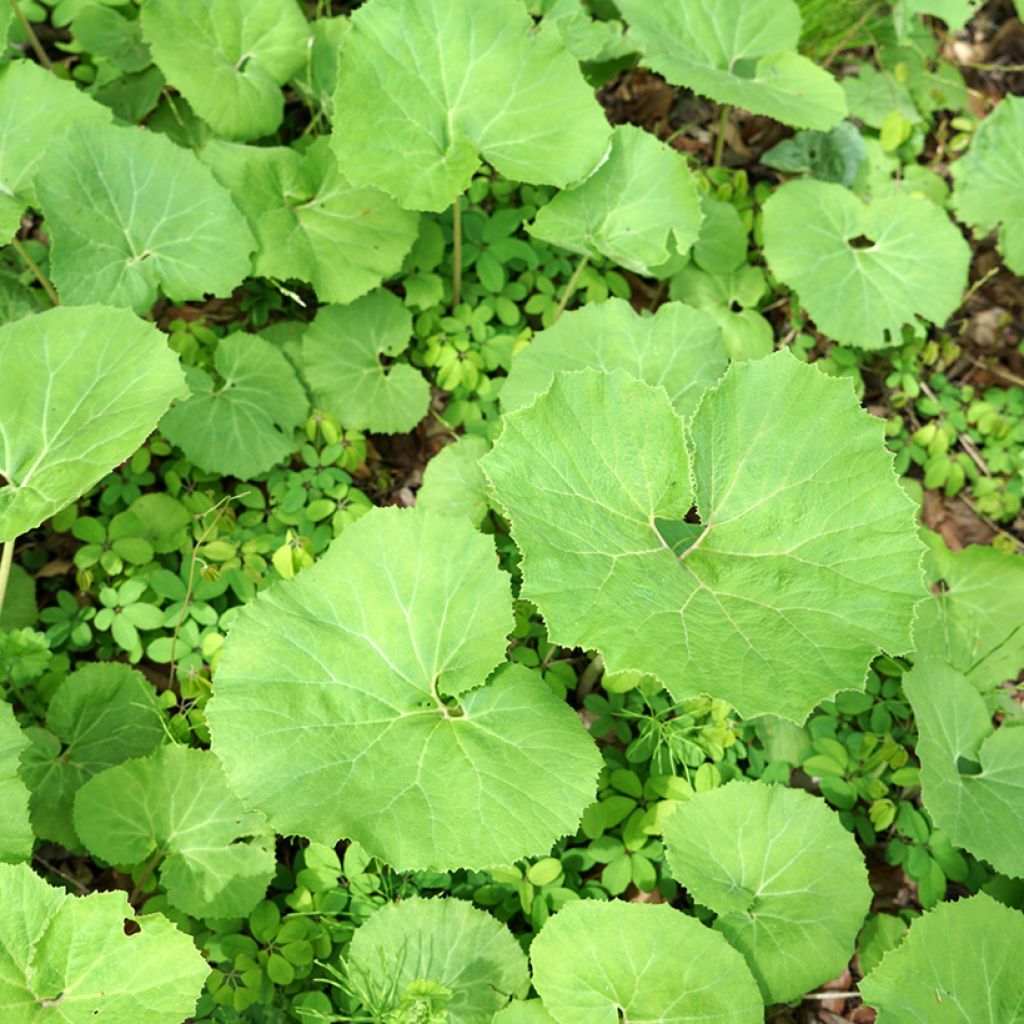

Petasites hybridus


Petasites hybridus


Petasites hybridus
Petasites hybridus
Petasites hybridus
Butterbur, Bog Rhubarb, Devil's Hat, Pestilence Wort
This item cannot be shipped to the selected country
Delivery charge from €5.90
More information
Schedule delivery date,
and select date in basket
This plant carries a 12 months recovery warranty
More information
We guarantee the quality of our plants for a full growing cycle, and will replace at our expense any plant that fails to recover under normal climatic and planting conditions.
From €5.90 for pickup delivery and €6.90 for home delivery
Express home delivery from €8.90.

Does this plant fit my garden?
Set up your Plantfit profile →
Description
The Petasites hybridus, also known as Butterbur or Hybrid Butterbur, is a vigorous perennial that thrives in damp and shaded environments. This rhizomatous ground cover lacks neither charm when its fragrant flowering blooms nor remarkable vigour that allows it to dominate the soil of a cool understory. In early spring, its rounded and stout inflorescences appear, unfolding into purple spikes adorned with tiny pink heads, emitting a delightful vanilla scent. The flowering is followed by the emergence of huge heart-shaped leaves, flexible and soft, with a matte green colour. Useful for filling in less favourable areas of a large garden, its tendency to spread must be controlled. This plant prefers moist to wet, non-chalky soils and dislikes intense sunlight.
The Petasites hybridus, formerly known as Petasites officinalis, is a common plant in France, especially in the east of the country. This herbaceous perennial is also known as Sweet Coltsfoot, Giant Coltsfoot, Common Butterbur, Devil's Hat, Pestilent Herb, or Marsh Rhubarb. It originates from North Africa, Western Asia, Southeast Asia, and Europe, where its habitat includes various wet locations such as riverbanks, ravines, forests, and plains, up to an altitude of about 1200m (3937ft).
The Giant Butterbur forms a strongly carpeting clump reaching 10 to 25 cm (4 to 10in) in flower but spreading indefinitely through its robust creeping rhizome. The plant is dioecious, meaning there are separate male and female plants. Both categories of individuals flower simultaneously, from March to April, before the leaves appear. Emerging from purple bracts, the inflorescence emerges from the ground. Its shape is that of an oval cluster, 10 to 25 cm (4 to 10in) tall. It consists of small female or male heads gathered in panicles. The flowers emit a delightful, sweet scent reminiscent of vanilla. The deciduous foliage appears later. It comprises spectacular leaves with a rounded lamina, slightly soft and woolly on the underside, reaching 50 cm (20in) to 1 meter (3 feet) in diameter! Their colour is a matte grey-green on the upper side, with a dentate margin and a long petiole.
The Hybrid Butterbur is a valuable plant that brings a lush and fragrant touch to the borders of a very large garden to cover a ditch or even a neglected, very humid understory. Its fragrance will waft into the garden's more 'civilised' areas. However, care must be taken to ensure it does not exceed the allotted boundaries, as it disregards property lines and neighbourly rules. As it loves humidity and dislikes direct sunlight, it can be easily contained by creating a dry rockery in its path, where the sun prevails over shade. It can be paired with Snowdrops, Solomon's Seals, and well-established Peonies.
Properties:
The Giant Coltsfoot is also a medicinal plant. Its leaves, roots, and rhizomes are used to extract an essential oil used in phytotherapy (detoxifying extract) to treat, among other things, allergic rhinitis (hay fever). Its rhizome is also rich in active ingredients used in preparations to treat migraines (currently being clinically studied in several countries). In traditional pharmacopoeias, the leaves were commonly used in poultices to cleanse and promote healing wounds and ulcers and treat burns. The flowers have medicinal properties that have been prescribed since ancient times to treat respiratory ailments such as coughs and asthma.
Report an error about the product description
Petasites hybridus in pictures






Flowering
Foliage
Plant habit
Botanical data
Petasites
hybridus
Asteraceae
Butterbur, Bog Rhubarb, Devil's Hat, Pestilence Wort
West Asia
Other Perennials A to Z
Planting and care
The Petasites hybridus can be grown without difficulty in shade or partial shade, in a constantly moist or wet, slightly chalky, neutral or acidic soil. It is hardy at least down to -20 °C (- 4°F). Limit its lateral growth by digging around the planting area in early spring, on the periphery, to be able to remove any wandering rootstocks.
Planting period
Intended location
Care
-
, onOrder confirmed
Reply from on Promesse de fleurs
Spring flowering perennials
Haven't found what you were looking for?
Hardiness is the lowest winter temperature a plant can endure without suffering serious damage or even dying. However, hardiness is affected by location (a sheltered area, such as a patio), protection (winter cover) and soil type (hardiness is improved by well-drained soil).

Photo Sharing Terms & Conditions
In order to encourage gardeners to interact and share their experiences, Promesse de fleurs offers various media enabling content to be uploaded onto its Site - in particular via the ‘Photo sharing’ module.
The User agrees to refrain from:
- Posting any content that is illegal, prejudicial, insulting, racist, inciteful to hatred, revisionist, contrary to public decency, that infringes on privacy or on the privacy rights of third parties, in particular the publicity rights of persons and goods, intellectual property rights, or the right to privacy.
- Submitting content on behalf of a third party;
- Impersonate the identity of a third party and/or publish any personal information about a third party;
In general, the User undertakes to refrain from any unethical behaviour.
All Content (in particular text, comments, files, images, photos, videos, creative works, etc.), which may be subject to property or intellectual property rights, image or other private rights, shall remain the property of the User, subject to the limited rights granted by the terms of the licence granted by Promesse de fleurs as stated below. Users are at liberty to publish or not to publish such Content on the Site, notably via the ‘Photo Sharing’ facility, and accept that this Content shall be made public and freely accessible, notably on the Internet.
Users further acknowledge, undertake to have ,and guarantee that they hold all necessary rights and permissions to publish such material on the Site, in particular with regard to the legislation in force pertaining to any privacy, property, intellectual property, image, or contractual rights, or rights of any other nature. By publishing such Content on the Site, Users acknowledge accepting full liability as publishers of the Content within the meaning of the law, and grant Promesse de fleurs, free of charge, an inclusive, worldwide licence for the said Content for the entire duration of its publication, including all reproduction, representation, up/downloading, displaying, performing, transmission, and storage rights.
Users also grant permission for their name to be linked to the Content and accept that this link may not always be made available.
By engaging in posting material, Users consent to their Content becoming automatically accessible on the Internet, in particular on other sites and/or blogs and/or web pages of the Promesse de fleurs site, including in particular social pages and the Promesse de fleurs catalogue.
Users may secure the removal of entrusted content free of charge by issuing a simple request via our contact form.
The flowering period indicated on our website applies to countries and regions located in USDA zone 8 (France, the United Kingdom, Ireland, the Netherlands, etc.)
It will vary according to where you live:
- In zones 9 to 10 (Italy, Spain, Greece, etc.), flowering will occur about 2 to 4 weeks earlier.
- In zones 6 to 7 (Germany, Poland, Slovenia, and lower mountainous regions), flowering will be delayed by 2 to 3 weeks.
- In zone 5 (Central Europe, Scandinavia), blooming will be delayed by 3 to 5 weeks.
In temperate climates, pruning of spring-flowering shrubs (forsythia, spireas, etc.) should be done just after flowering.
Pruning of summer-flowering shrubs (Indian Lilac, Perovskia, etc.) can be done in winter or spring.
In cold regions as well as with frost-sensitive plants, avoid pruning too early when severe frosts may still occur.
The planting period indicated on our website applies to countries and regions located in USDA zone 8 (France, United Kingdom, Ireland, Netherlands).
It will vary according to where you live:
- In Mediterranean zones (Marseille, Madrid, Milan, etc.), autumn and winter are the best planting periods.
- In continental zones (Strasbourg, Munich, Vienna, etc.), delay planting by 2 to 3 weeks in spring and bring it forward by 2 to 4 weeks in autumn.
- In mountainous regions (the Alps, Pyrenees, Carpathians, etc.), it is best to plant in late spring (May-June) or late summer (August-September).
The harvesting period indicated on our website applies to countries and regions in USDA zone 8 (France, England, Ireland, the Netherlands).
In colder areas (Scandinavia, Poland, Austria...) fruit and vegetable harvests are likely to be delayed by 3-4 weeks.
In warmer areas (Italy, Spain, Greece, etc.), harvesting will probably take place earlier, depending on weather conditions.
The sowing periods indicated on our website apply to countries and regions within USDA Zone 8 (France, UK, Ireland, Netherlands).
In colder areas (Scandinavia, Poland, Austria...), delay any outdoor sowing by 3-4 weeks, or sow under glass.
In warmer climes (Italy, Spain, Greece, etc.), bring outdoor sowing forward by a few weeks.



































